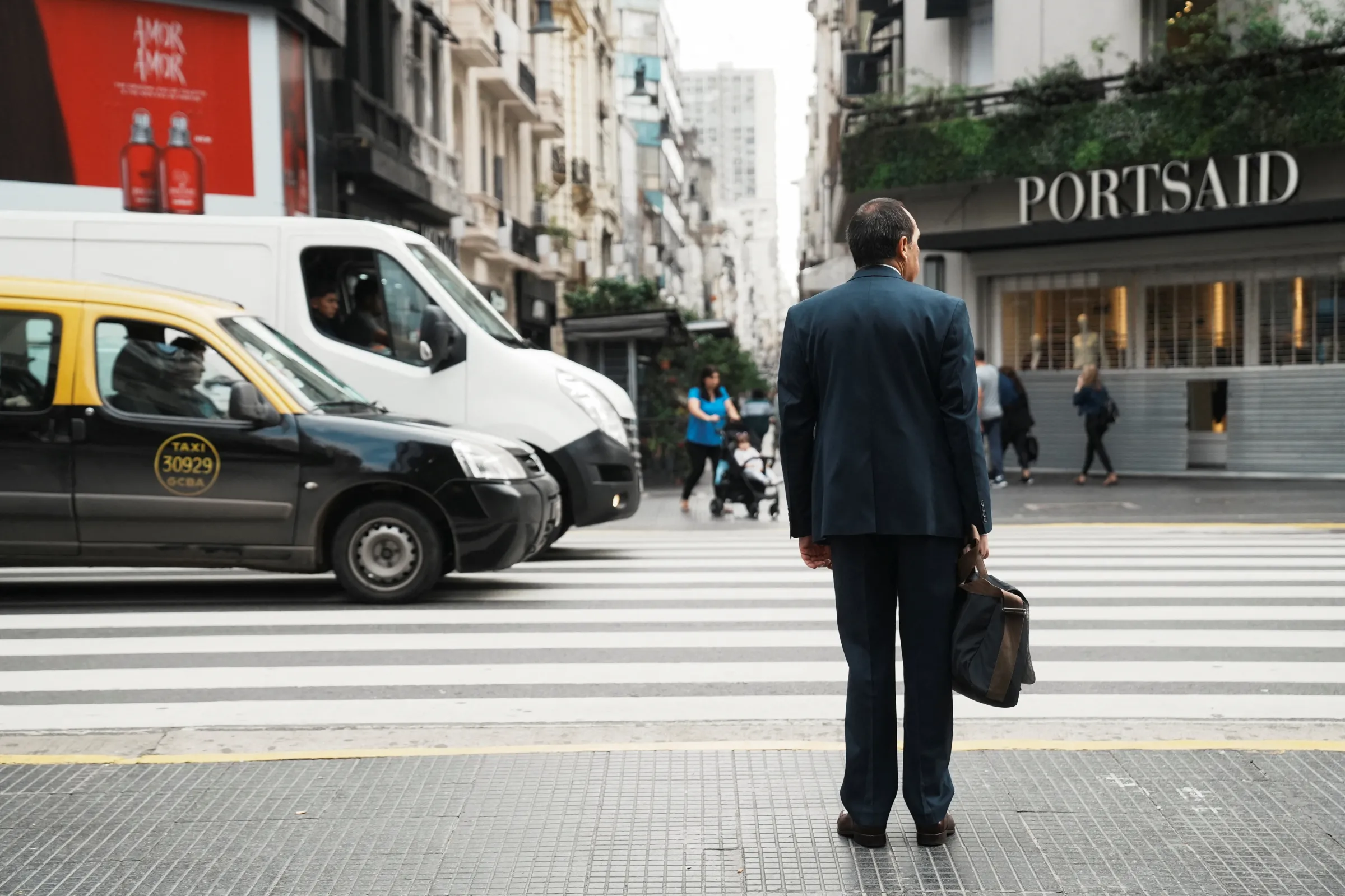AI helps tackle traffic carbon emissions in Buenos Aires

A man waits to cross the street in Buenos Aires, Argentina April 11, 2025. REUTERS/Irina Dambrauskas
What’s the context?
Artificial intelligence and Google Maps help Buenos Aires optimize traffic flow that can lower carbon emissions.
BUENOS AIRES - On weekday mornings, commuters from Buenos Aires' northern suburbs come thundering in from the highway, only to grind to a halt at a string of traffic lights along the Ruiz Huidobro Avenue, a broad thoroughfare connecting important routes into the Argentine capital.
These drivers may not realize it, but since October, a tiny change using artificial intelligence (AI) means they have been stopping less.
City traffic officials tweaked the traffic light cycle at Tronador Street so it matched that of Melián Avenue, four blocks northeast, and staggered the cycles between them.
That adjustment was the suggestion of Green Light, a Google project that uses AI and Google Maps driving trends to make smart recommendations to optimise traffic flow.
In doing so, it cuts the carbon emissions and air pollution associated with stop-start traffic.
As a result, drivers along that stretch of road are making 14% fewer stops while saving 2,339 hours of travel time and 6,987 litres of fuel annually, according to figures provided to Context/the Thomson Reuters Foundation by Buenos Aires City Government.
A 2016 study in the journal Environmental Science: Processes and Impacts found pollution at stoplights can be up to 29 times higher than in free-flowing traffic.

Vehicles are pictured in a traffic jam in Buenos Aires, Argentina, June 9, 2015. REUTERS/Enrique Marcarian
Vehicles are pictured in a traffic jam in Buenos Aires, Argentina, June 9, 2015. REUTERS/Enrique Marcarian
This, Google said, means making AI-based recommendations to optimise traffic light cycles constitutes a major opportunity to cut down on carbon emissions as dozens of cities around the world aim to eliminate their net greenhouse gas emissions by 2030 and become net zero.
Green Light is live at more than 70 intersections, and "early numbers indicate the potential to reduce stops by up to 30% and reduce emissions at intersections by up to 10%," wrote Kate Brandt, Google's chief sustainability officer, in 2023.
Since 2021 the Green Light project has been implemented in 17 cities, including Rio de Janeiro, the Indian cities of Kolkata and Bengaluru, Abu Dhabi, Manchester, England and the U.S. cities of Seattle and Boston.
Each location comes with different challenges, according to Matheus Vervloet, Green Light's product manager.
"In India, traffic management is the responsibility of the police," Vervloet told Context/the Thomson Reuters Foundation.
"So even if you go into the traffic engineering department, they're all uniformed policemen, which is different from other parts of the world. You see more hierarchical decision making.”
In Germany, meanwhile, the project can face delays because of internal bureaucracy, he added.
"They go through a lot more processes before making changes," he said. "In other countries, it's quicker."
Shaving off seconds
Changes are often minute, involving adjustments of just a second or two to traffic light timings.
In a complex network such as city traffic, larger adjustments, like changing a traffic light cycle to 90 seconds from 30, can have unintended consequences. Drivers may change their routes, meaning the stoplights Google is analysing become irrelevant, Vervloet said.
"If you have a small change, you're likely not going to have a big behaviour shift," he said.
Sceptics point out that even highly optimised smart stoplight systems are still geared around drivers' behaviour and attitudes.
"Measures taken so that cars don’t have to stop typically have the opposite effect: they make people more interested in driving," said Laura Ziliani, an independent transport and urbanism consultant previously based in Buenos Aires.
She said she believes cities should discourage driving by implementing measures such as slower speed limits and costlier road tolls.
The City of Buenos Aires is gradually building more public transport. Mayor Jorge Macri recently announced plans for a new subway line, and a new electric bus started operation in May.
But many people drive in from distant suburbs far beyond the city limits, according to Pablo Bereciartua, Minister of Infrastructure and Mobility at Buenos Aires City Government.
"Any large metropolis — New York, Madrid, Paris, London — has metropolitan railways that are proportionally more effective than Buenos Aires. They work better and transport more people," he said.
"Those people don't use their private cars because they come by train," he added.
In the meantime, he argues, a significant proportion of commuters are limited to driving — and projects such as Green Light can help reduce the environmental impact of those cars.
Buenos Aires officials would like to extend the use of Green Light and other smart stoplight technology along more main roads into the city, according to Bereciartua.
This task, he noted, is complicated because the routes on the other side of the capital's ring road are the purview of Buenos Aires Province.
Vervloet noted that cities still need to build out their public transport and cycling infrastructure to tackle emissions.
But while they do that, he said, Green Light is a low-cost alternative. It is free for cities to use and does not require installation of equipment such as sensors.
"Maybe 10 years from now, a project like Green Light is not going to be necessary anymore," he said.
"That would be a success."
(Reporting by Amy Booth; Editing by Anastasia Moloney and Ellen Wulfhorst. The Thomson Reuters Foundation is the charitable arm of Thomson Reuters. Visit https://www.context.news/)
Context is powered by the Thomson Reuters Foundation Newsroom.
Our Standards: Thomson Reuters Trust Principles
Tags
- Tech and climate
- Adaptation
- Net-zero
- Google
- Climate solutions
















